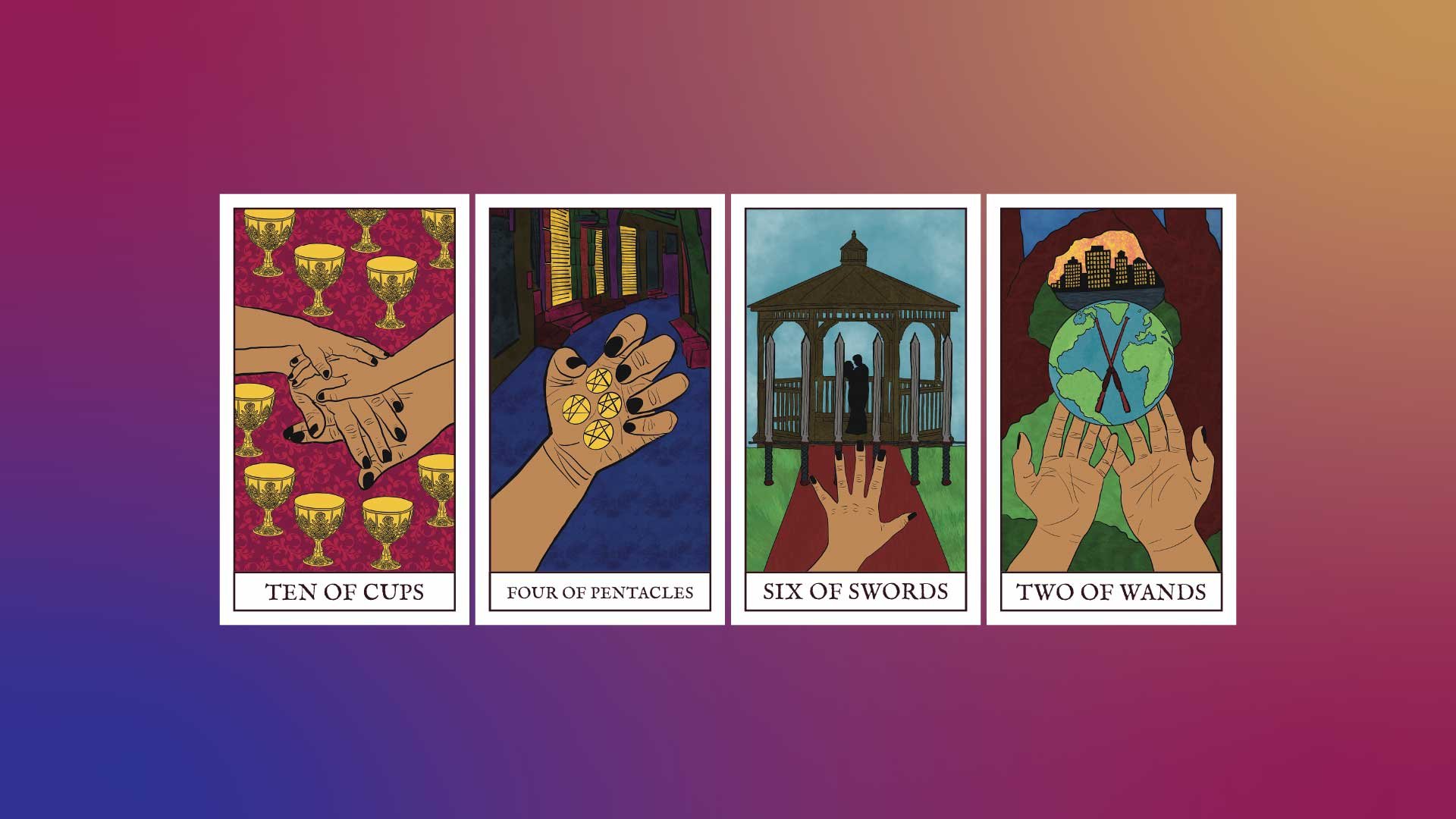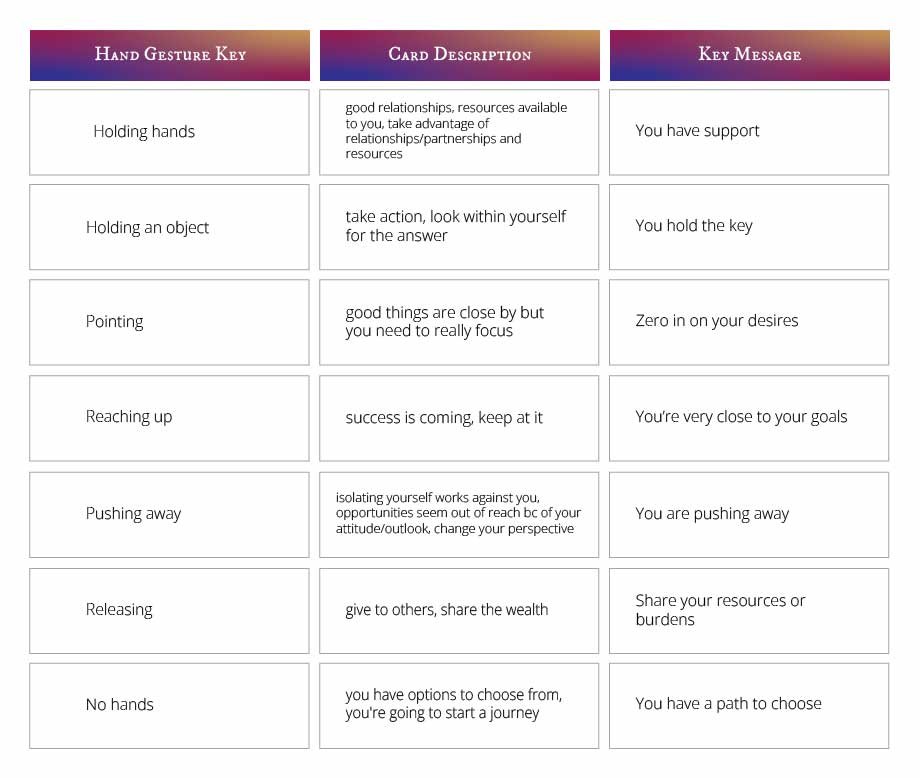
Perspective Tarot
Learning the Minor Arcana
Project Summary
Perspective Tarot was created with learning design principles to serve novice readers seeking guided support in their Tarot learning journeys. Tarot consists of 78 cards split across the Major and Minor Arcanas, which deal with significant life transitions and daily occurrences, respectively. The Minor Arcana is divided into four suits (Cups, Pentacles, Wands, and Swords), each containing four Court cards (Page, Knight, Queen, and King) and ten Pip cards (1-10). This project provides a learning scaffold for mastering the Pip cards through originally designed cards, an accompanying guidebook, and a guided worksheet for conducting simple Past-Present-Future readings. Drawn from the reader’s perspective, this deck utilizes a key system of seven distinct hand gestures, as well as a storytelling device, to impart key messages to the reader.
Research Problem: How can I facilitate Tarot learning, specifically the Minor Arcana, among novice readers?
Thesis Instructor: Matt Griffin
Tools: FigJam, Procreate, Photoshop, print
Timeframe: September 2023 - May 2024
Role: I illustrated the Perspective Tarot deck, developed the original Hand Gesture Key System for learning the cards, and engaged in research-driven design to create a learning scaffold for novice Tarot learners performing readings early in their journeys.
Perspective Tarot Deck and Instructional Materials
This project includes 40 Pip cards, a guidebook of interpretations for each card, and instructional materials for independently facilitating a 3-card Past-Present-Future Tarot reading.
Key Terms
Tarot: A divination tool that utilizes 78 playing cards to share predictive readings and guidance into presented scenarios.
Major Arcana: Subset of 22 Tarot cards that feature archetypal characters, which describe major life transitions or events in the querent’s life.
Minor Arcana: Subset of 56 Tarot cards that describe day-to-day occurrences in the querent’s life. The Minor Arcana contains
Tarot reader: Individual who performs a Tarot reading.
Querent: Individual who provides the inquiry or question for a Tarot reading; oftentimes a client.
The cards were designed according to a key system I developed, the Hand Gesture Key System. This system lists seven distinct hand gestures that each impart shorthand pieces of wisdom for the novice learner to take away.
The guidebook includes core elements such as the Hand Gesture Key Message, three key terms, a narrative description with possible interpretations, and a contextual key message for the overall card. The description is written as a second-person narrative, so that the Tarot reader becomes the subject of the card’s imagery, putting themselves in the shoes of the querent who is navigating the scene of the card.
Lastly, the Tarot reading worksheet provides a learning scaffold for novice learners who are performing their first-ever querent reading. This worksheet specifically facilitates a three-card Past-Present-Future reading. In addition to step-by-step instructions in the guidebook (available in written and audio form), this worksheet allows learners who haven’t mastered the individual cards yet to perform a reading with their own intuition and common interpretations.
Key Takeaways
Tarot reading involves multi-level layers of analysis, best summarized as follows:
Understanding the interpretations of individual cards,
Connecting the individual cards to their placement in a layout,
Bridging the narrative told by the cards altogether, and
Tying the layout’s narrative to the querent’s inquiry.
Moreover, in order to design scaffolds that result in productive Tarot learning experiences, it’s important to keep the following points in mind:
In order for novice learners to feel comfortable trusting their own intuition, we need to establish a safe space for the reader and querent to explore multiple avenues of interpretation.
While Tarot reading is a very holistic and interdependent process that involves multiple layers of analysis, segmentation is a helpful method for novice learners working their way towards an expert skill of interpretation.
It’s okay to hold the learner’s hand as they build the entire narrative of a Tarot layout. While the ultimate goal is for the novice learner to gain confidence and skill through their own intuition, we must remember that it takes time and patience to gain that intuition over time.





